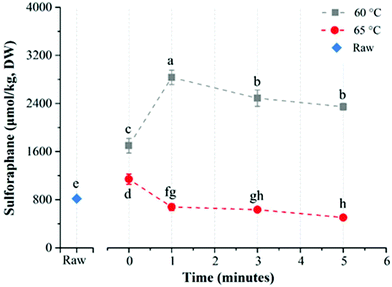This 2019 article was by the author of Sulforaphane: Its “Coming of Age” as a Clinically Relevant Nutraceutical in the Prevention and Treatment of Chronic Disease. It isn’t widely available, so I’ll quote liberally:
“Demand for solutions to digestive health issues is accelerating, especially since both scientific literature and popular press dedicate significant resources to promoting awareness of what has come to be known as ‘gut health’. In considering available therapies and the possibility that a somewhat different approach may more comprehensively optimise function of the gut ecosystem, a number of questions which do not yet have satisfactory answers are ponderable dilemmas:
- If diet alone can dramatically shift composition of the microbiome within 24 hours, what do we expect of a probiotic supplement?
- + Even though probiotics as food or supplements demonstrate favourable clinical outcomes, they typically don’t colonise the gut. How do we expect them to restore diversity and lost species to the gut microbiome after antibiotics? If no trace of an administered probiotic organism can be found a few weeks later, is there any sustained benefit?
- Presence of obesity and other diseases is indirectly proportional to diversity of microbial organisms inhabiting the human gut. What can we expect of a few selected probiotic strains in helping to solve this problem?
- No antimicrobial approach selectively destroys a pathogen without impacting commensals to some degree. If we select a tool to eradicate gut pathogens, pathobionts or rogue commensals, how do we avoid damaging protective commensals with which we live symbiotically?
- The value of using a probiotic supplement after antibiotic therapy to recolonise the gut is uncertain. A 2018 multi-centre study showed that probiotic supplementation after antibiotics delayed gut microbiome reconstitution by around five months.
- If the gut can harbour around 1,000 different species, why do we expect a probiotic supplement harbouring just a few species to favourably modify a human microbiome?
- If Lactobacilli make up <0.1% of total microbes, why do we so readily choose them as probiotic supplements?
- If L-glutamine is a preferred energy source for the small intestine and not the colon, why is it used almost universally in gut repair programmes regardless of the affected region?
Removal of gluten and administration of probiotics have lesser impact than endogenous factors like elevated HbA1c:
Shift emphasis closer to optimising colonocyte metabolism as the primary driver of dysbiosis in the colon. Since these mechanisms within the human gut ecosystem already exist, intervene at this level, as distinct from using antimicrobials and exogenous probiotic strains to influence host cell function.
Phytonutrients that potently activate these core processes have been identified and are sufficiently bioavailable to achieve this end. Restoring homeostasis to intestinal epithelial cells can be readily justified as a key initial step.
Sulforaphane is a potent inducer of hundreds of genes associated with cellular defences mechanisms. In this context, these genes include those that code for antioxidant and phase II detoxification enzymes, glutathione and metallothionein.
Sulforaphane exhibits other more specific gut and immune-related effects. As the most potent single food-derived activator of Nrf2, sulforaphane is capable of upregulating protective genes in colonocytes and other cells.
A growing body of work has identified the colonocyte as the driver of dysbiosis. Targeting colonocyte function provides an alternative to targeting microbes for remediation of dysbiosis.”
https://www.researchgate.net/publication/336578800_Restoring_Gut_Ecology_Harnessing_the_Inbuilt_Defence_Mechanisms_of_the_Gut_Epithelium “Restoring Gut Ecology: Harnessing the Inbuilt Defence Mechanisms of the Gut Epithelium” (registration required)
If you can’t access this paper, read The future of your brain is in your gut right now. If you can’t access that paper, listen to Switch on your Nrf2 signaling pathway.







 Inauguration day
Inauguration day
 And 2021 will look like..?
And 2021 will look like..?

 Thanks for all the fish!
Thanks for all the fish!














